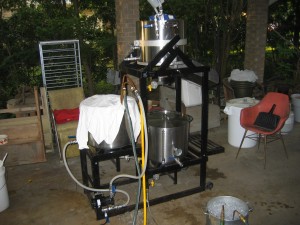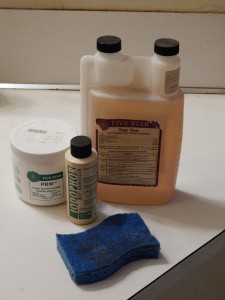
Wort being chilled with an immersion chiller. The kettle is covered loosely with a lid. Steam from the boil sanitized the lid. I also drape clean T-shirts over the kettle while chilling to prevent airborne microorganisms moving vertically through the crack in the kettle lid.
Recently, I posted an article advocating that brewers think about cleaning and sanitation as a matter of degree rather than a “good enough”/“not good enough” dichoctomy. In this article, I’ll share some ideas to move your cleaning and sanitation practices from “good enough” to just a bit better than that. For the sake of completeness, I’ll cover some familiar ground, but I think there are a couple ideas in here that are not well appreciated in the homebrewing community. [Read more…]




Recent Comments